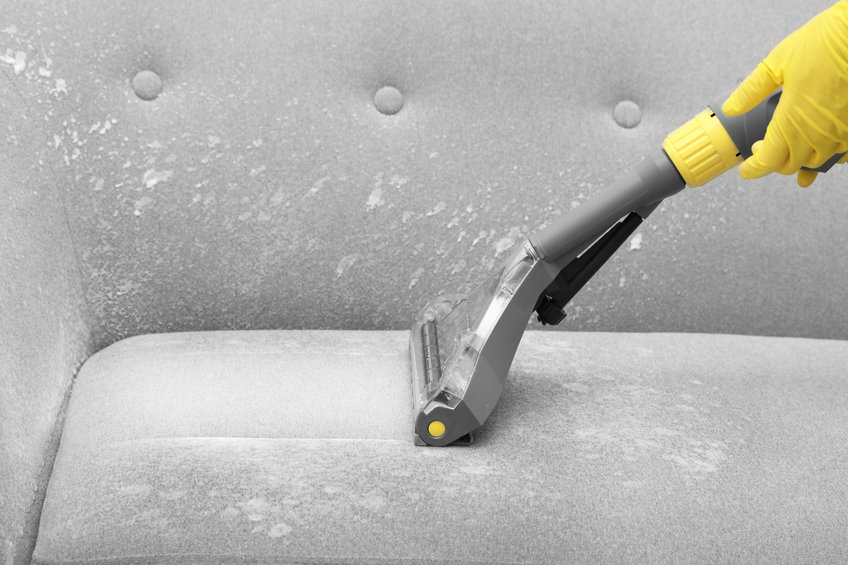- Identify the Type of Material
Before you start cleaning, it is important to identify the type of material used on your upholstery by finding the cleaning code. These codes are often located on the furniture tags underneath the couch or attached to the cushions.

Tags with W/S code imply that only water or solvent-based products should be used while X means that you can clean your upholstery with a vacuum or gentle brush. It is important to pre-test in an inconspicuous area before using a spot-removal product on a stain. If you have trouble locating the tag and cannot find it on the manufacturer’s website, then you can have it examined by a professional to avoid any damage to the upholstery.
- Vacuum Your Upholstery
Vacuuming your couch and other upholstered furniture in your living area prevents dirt from being embedded in fibers. It determines the rate at which your couch becomes dingy. Wiping them with a wet cleaning towel only embeds the dirt further and makes the material fade faster. Keep in mind that stains might be difficult to clean if dust, fur, lint, hair, and other debris are in the way. Take off all removable cushions and collect the bobby pins, coins, and other items that may have fallen into the couch. A lint roller can be useful in removing fur if you have pets. Vacuum each cushion and the couch itself using the crevice tool and upholstery attachment. Take extra care around areas where dust and debris are more likely to settle such as the seams and corners. Take precautions about the suction strength of your vacuum if you are dealing with delicate fabric like silk.
- Spot-Clean Stains
The major factors that determine if a stain will come out are the type of fabric, what was spilled, and how long it has been there. It is recommended to get off as much of the liquid from your upholstery as soon as you stain or spill something. Failure to remove the entire residue makes things worse as the cleaning agent will only spread the stain further. Ignoring stains, or doing nothing after a spill creates permanent stains as the liquid bonds to fibers. Use white paper towels or a dry, white absorbent cloth to blot the stain. You can also use a portable upholstery cleaner or a wet-dry vac to suck up the residue. A plastic scraper may come in handy for semi-solid stains.
Dab the stain with your cleaning solution after removing the entire residue. To stop the stain from spreading, blot gently from the edges towards the center of the spill. Be careful enough not to scrub the stain as it could cause pile distortion around the spot. Once you are done, use cold water to rinse the affected area and blot it dry. It is important to get out much of the cleaning solution as you can to prevent discoloration.
When Should I Hire a Professional?
It is not recommended to deep clean a heavily soiled couch by yourself. If you are dealing with a complicated textile, cannot identify the fabric, or lack the right products and tools for the job, you may have to call in a professional. A cleaning professional will first inspect the fabric, then test their product on a hidden spot and remove any dry soil. They also use a few combinations of chemical products, agitation, heat, and time to separate embedded soil from the upholstery. Suspended soil can be extracted by wet vacuuming, absorption, or rinsing.
The process of deep cleaning your upholstery can take longer than expected, especially when dealing with delicate fabric. You need to avoid causing as much damage as possible by using the right products and cleaning methods. Hiring a professional to clean your upholstery could guarantee the best outcome by preserving the color and giving it a fresh look this year.
